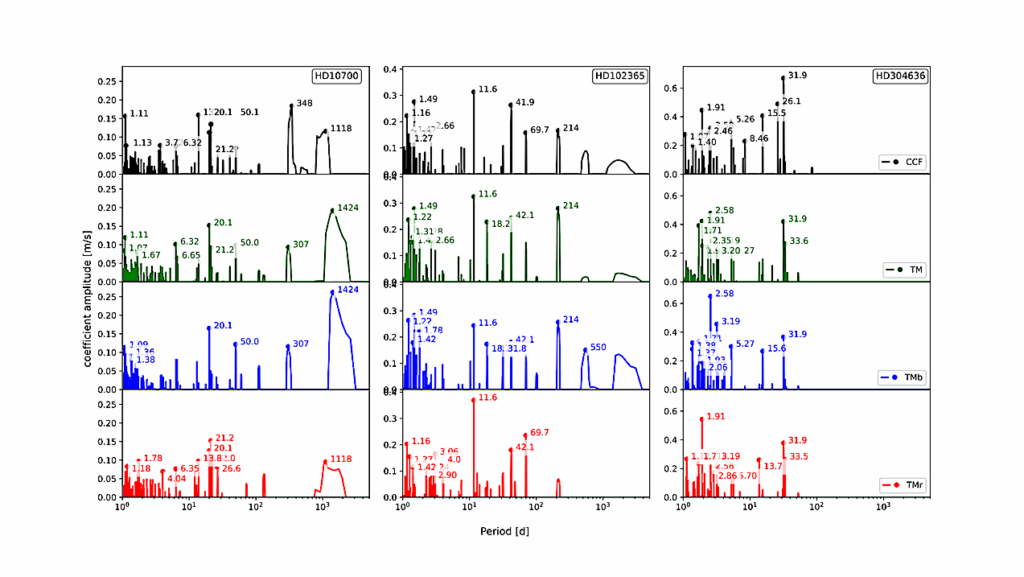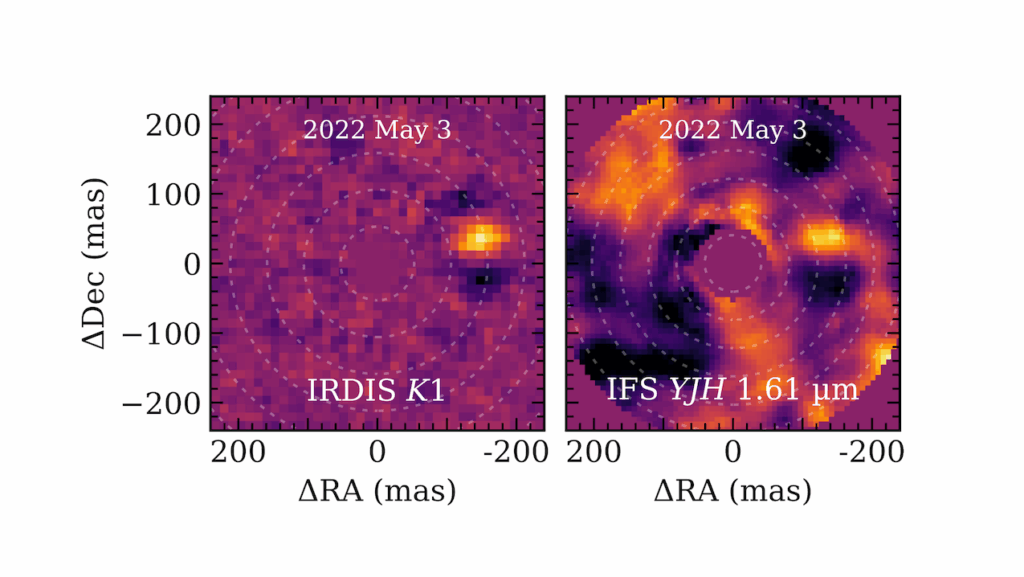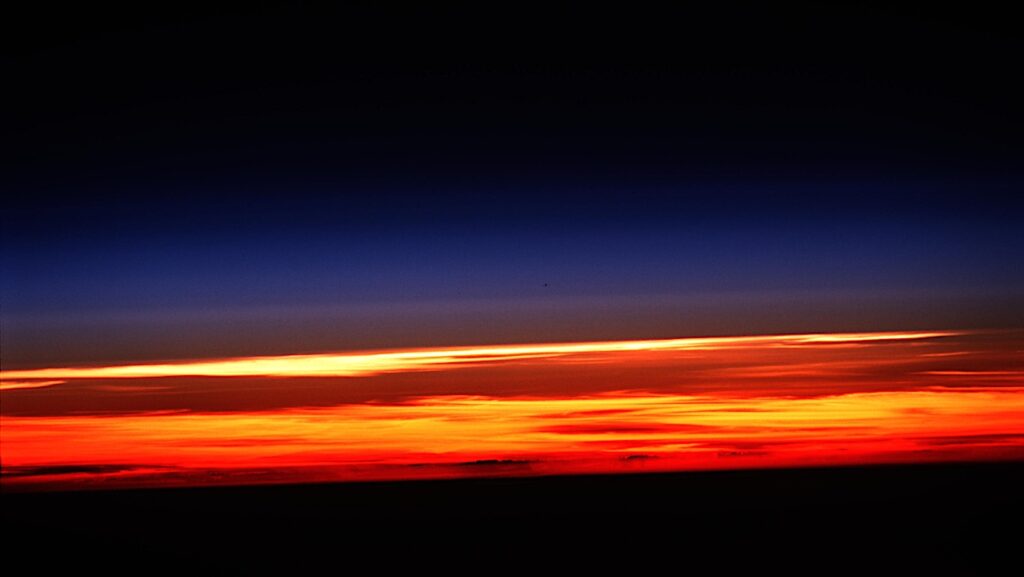Improved Contrast in Images of Exoplanets using Direct SNR Optimization

Direct imaging of exoplanets is usually limited by quasi-static speckles. These uncorrected aberrations in a star’s point spread function (PSF) obscure faint companions and limit the sensitivity of high-contrast imaging instruments.
Most current approaches to processing differential imaging sequences like angular differential imaging (ADI) and spectral differential imaging (SDI) produce a self-calibrating dataset that are combined in a linear least squares solution to minimize the noise. Due to temporal and chromatic evolution of a telescope’s PSF, the best correlated reference images are usually the most contaminated by the planet, leading to self-subtraction and reducing the planet throughput. In this paper, we present an algorithm that directly optimizes the non-linear equation for planet signal to noise ratio (SNR). This new algorithm does not require us to reject adjacent reference images and optimally balances noise reduction with self-subtraction.
We then show how this algorithm can be applied to multiple images simultaneously for a further reduction in correlated noise, directly maximizing the SNR of the final combined image. Finally, we demonstrate the technique on an illustrative sequence of HR8799 using the new Julia-based Signal to Noise Analysis Pipeline (SNAP). We show that SNR optimization can provide up to a 5× improvement in contrast close to the star. Applicable to both new and archival data, this technique will allow for the detection of lower mass, and closer in companions, or achieve the same sensitivity with less telescope time.
William Thompson, Christian Marois
Comments: 14 pages, 9 figures. Accepted for publication in AJ
Subjects: Instrumentation and Methods for Astrophysics (astro-ph.IM)
Cite as: arXiv:2103.09252 [astro-ph.IM] (or arXiv:2103.09252v1 [astro-ph.IM] for this version)
Submission history
From: William Thompson
[v1] Tue, 16 Mar 2021 18:01:04 UTC (4,383 KB)
https://arxiv.org/abs/2103.09252
Astrobiology,








